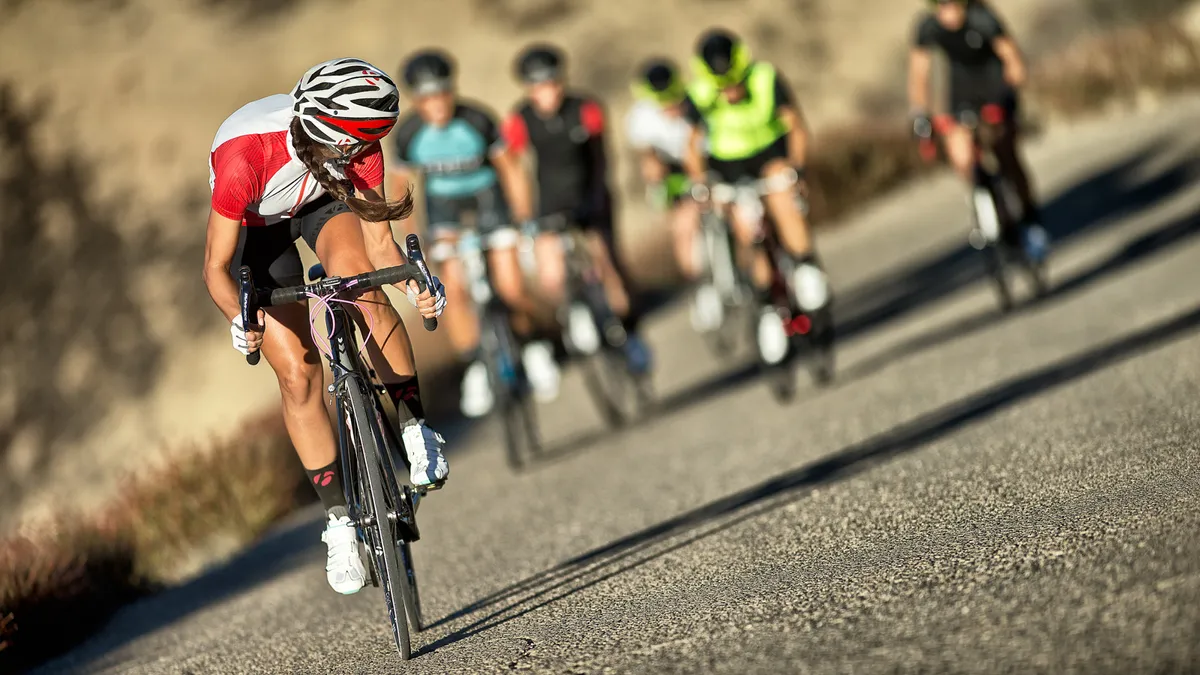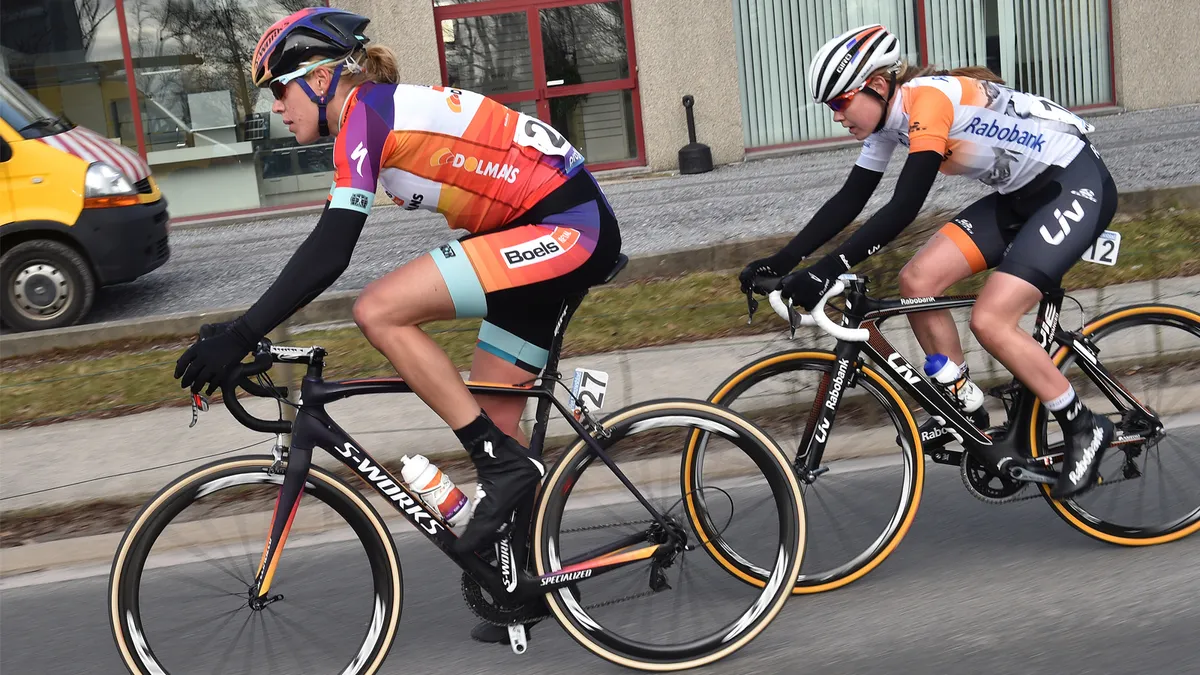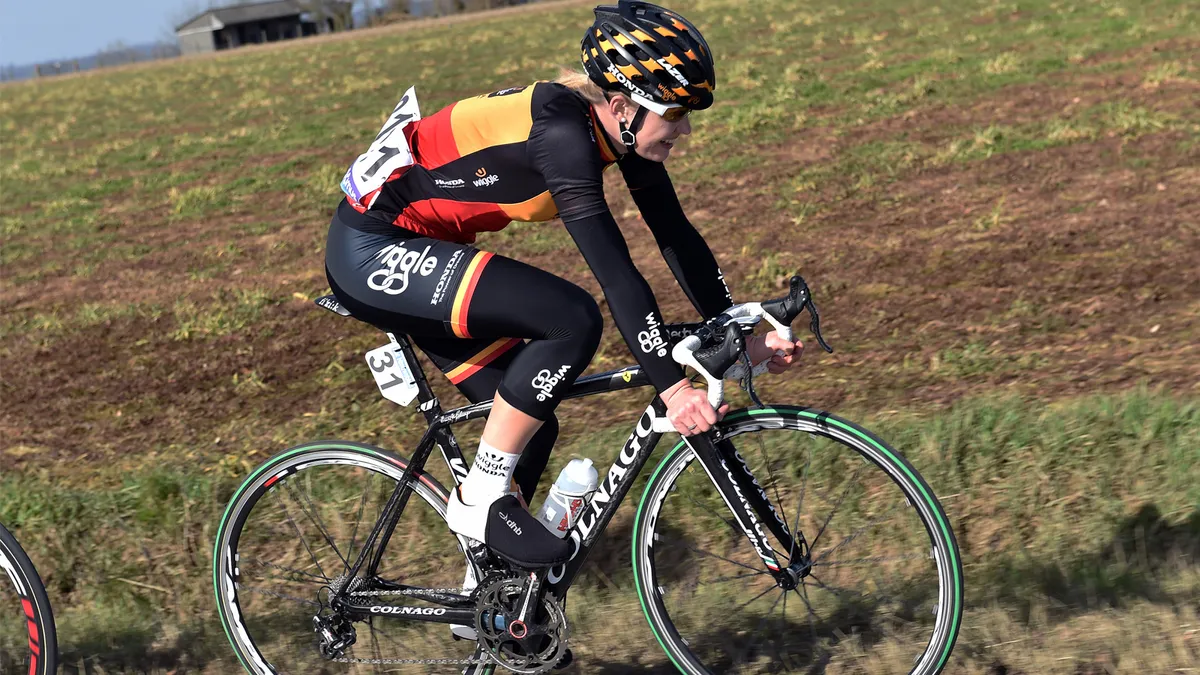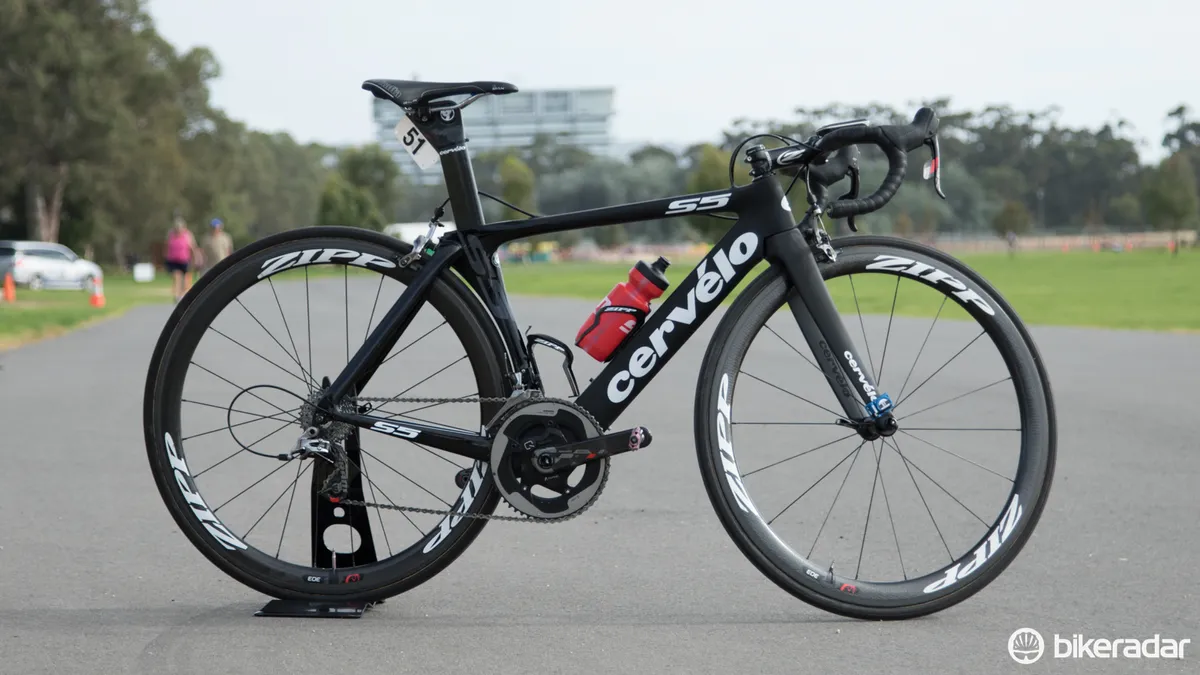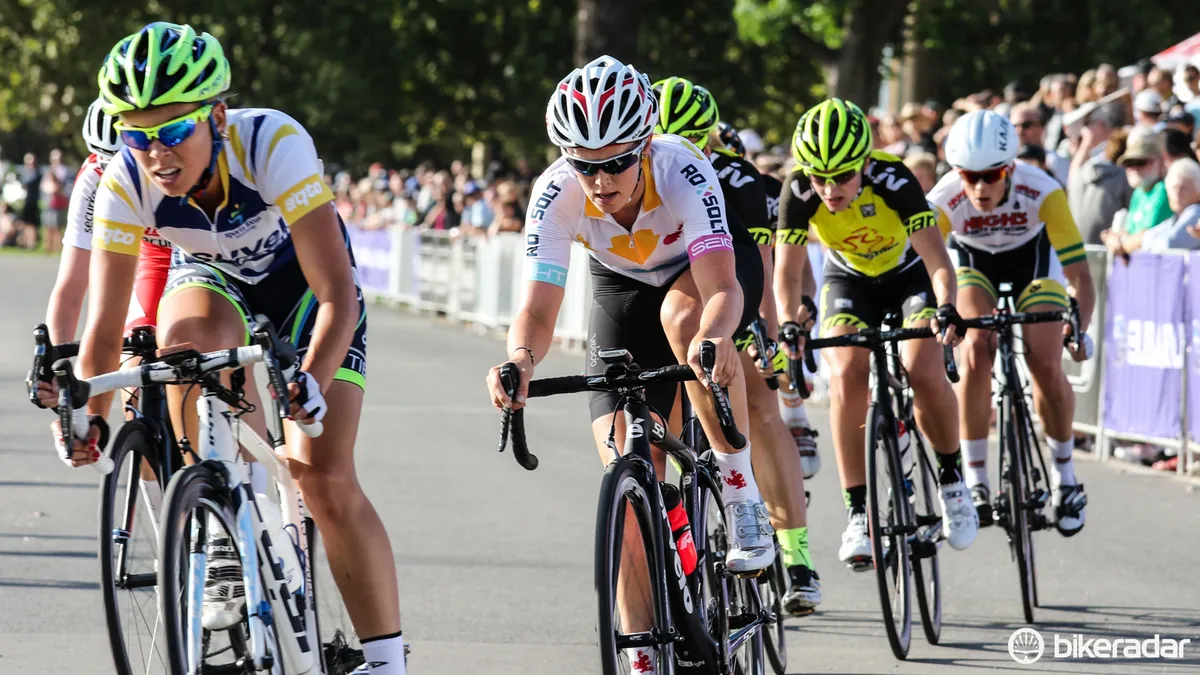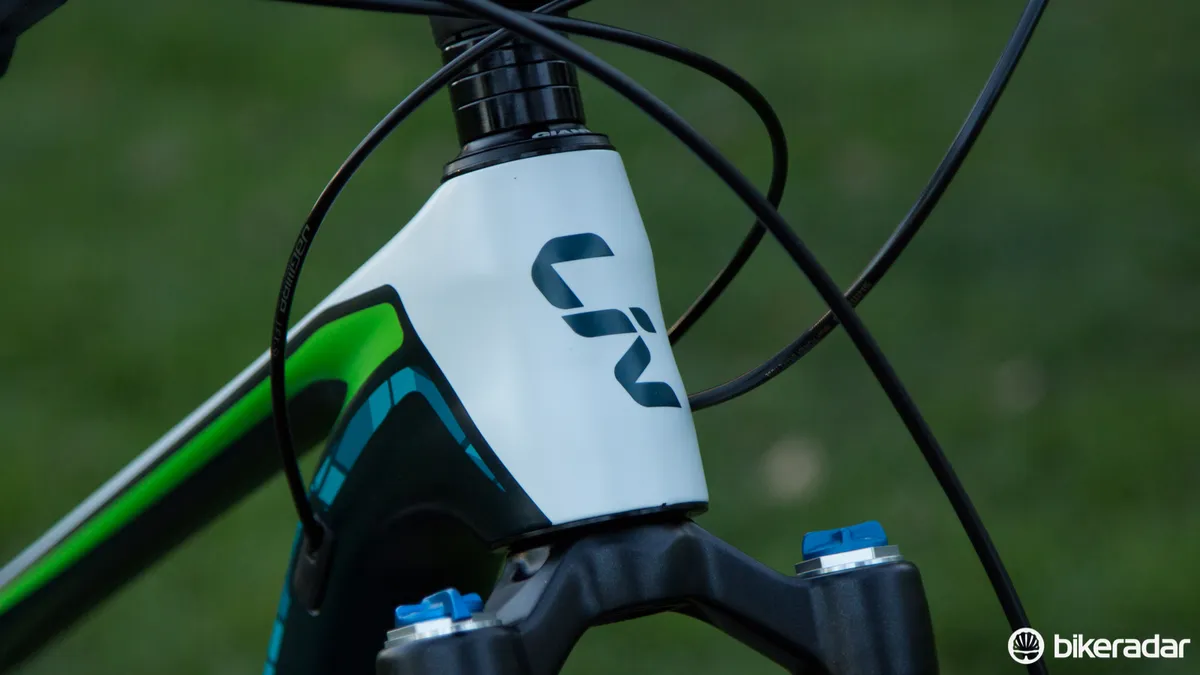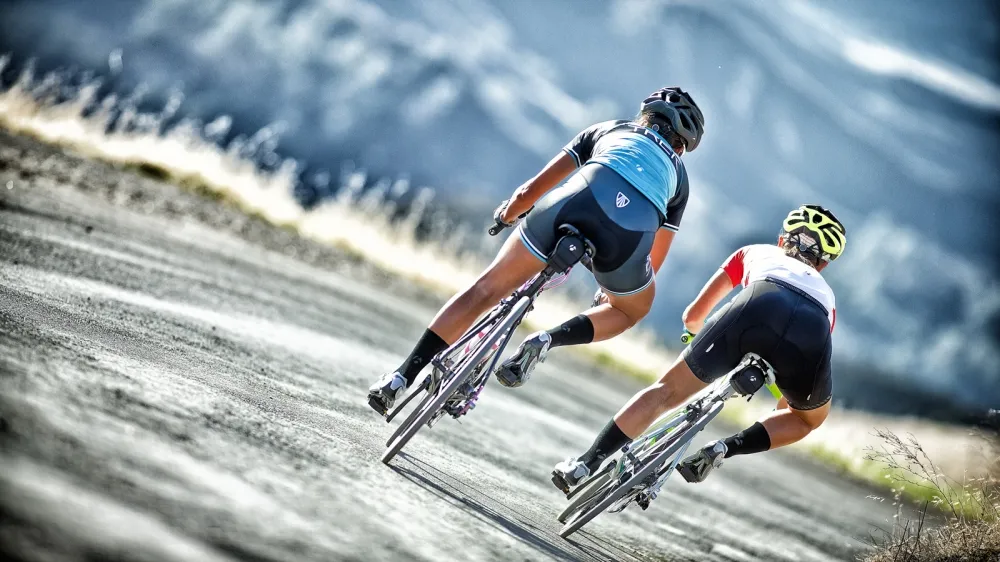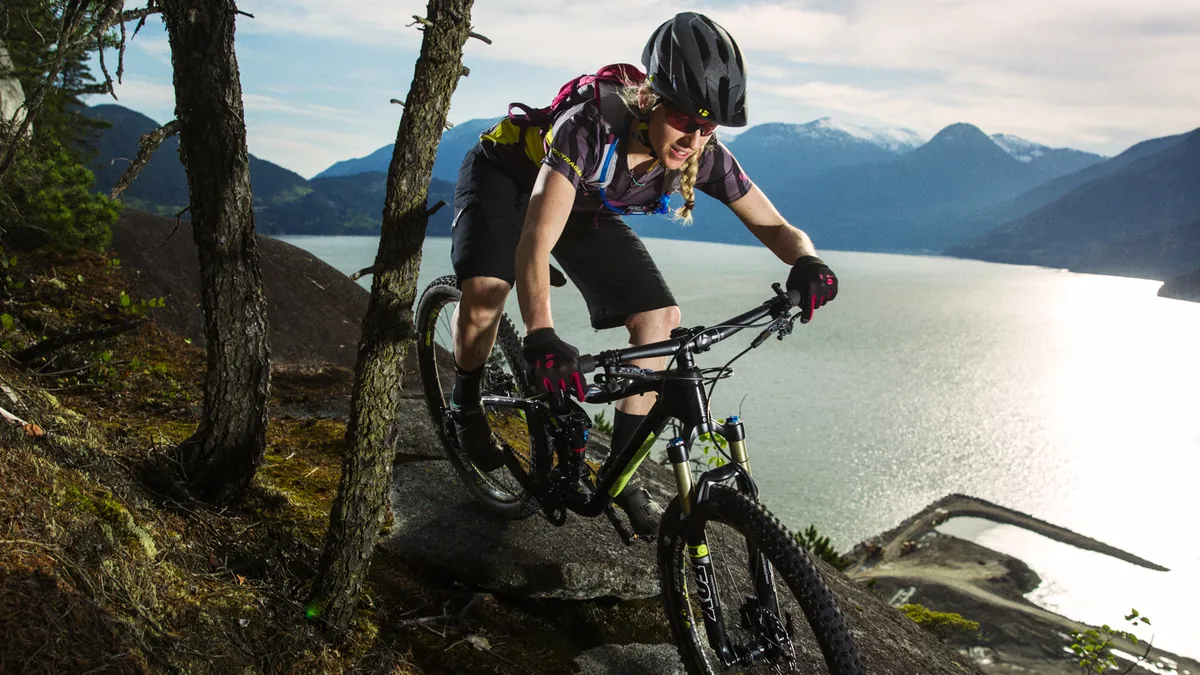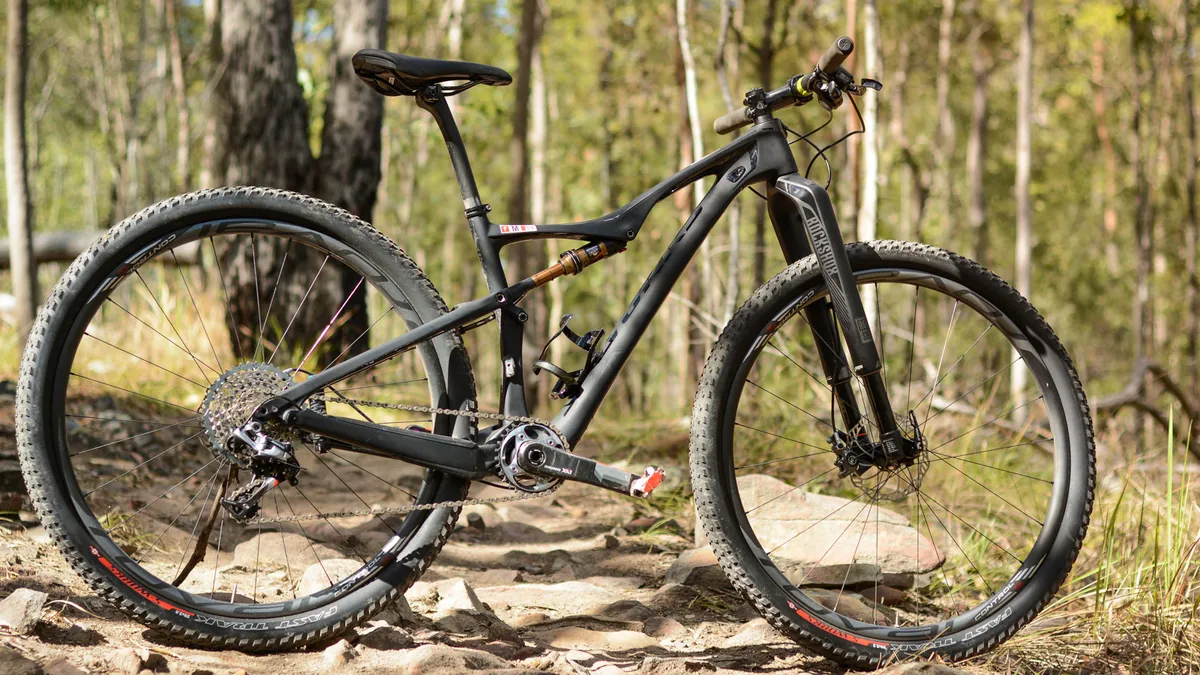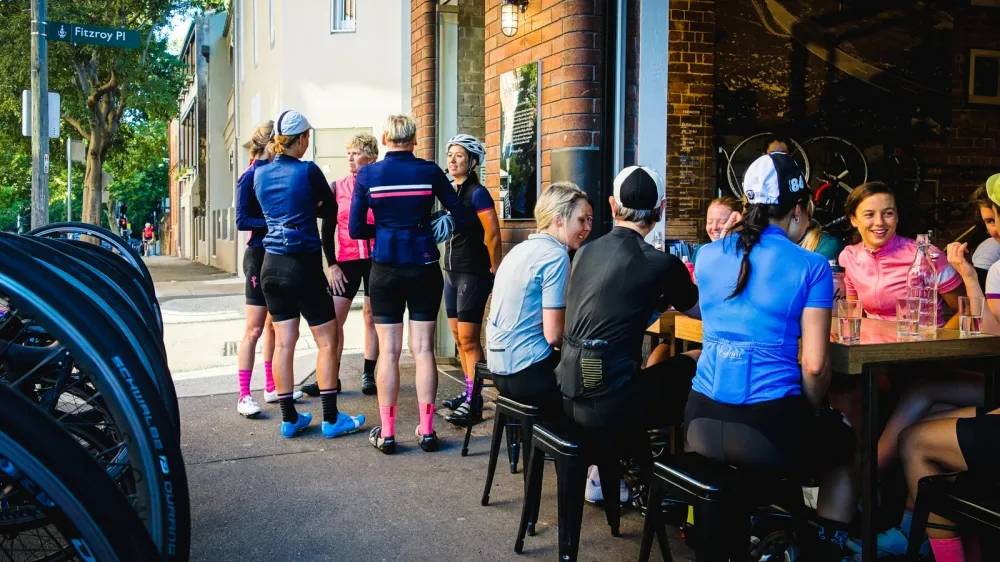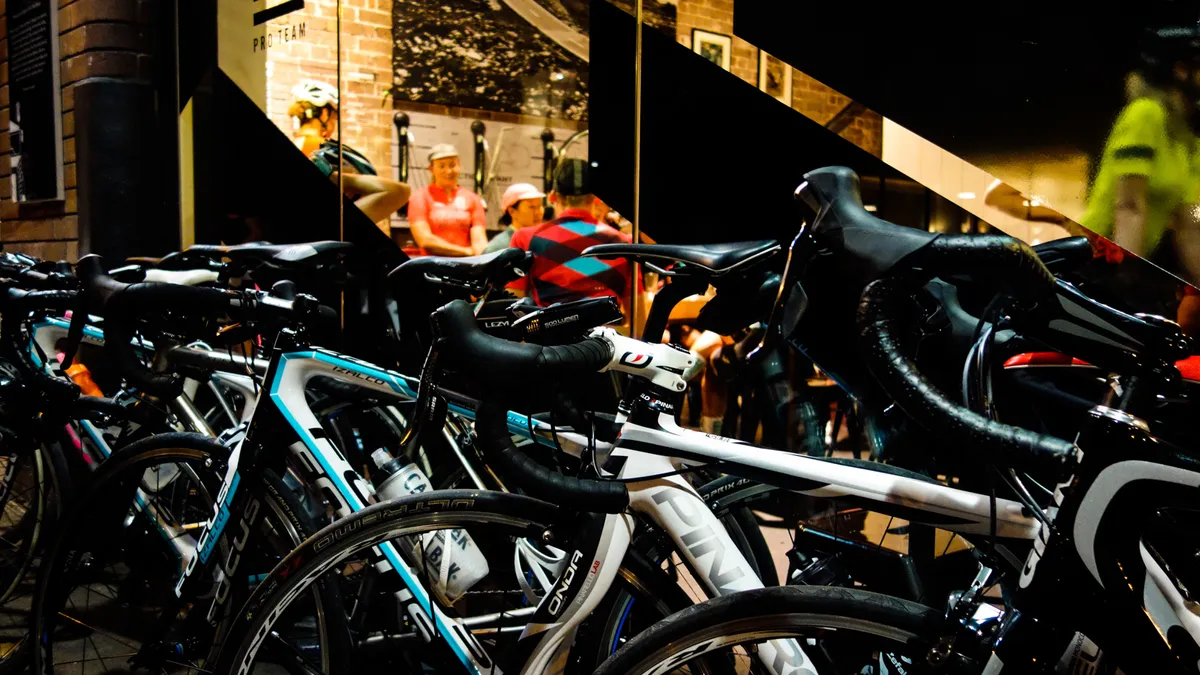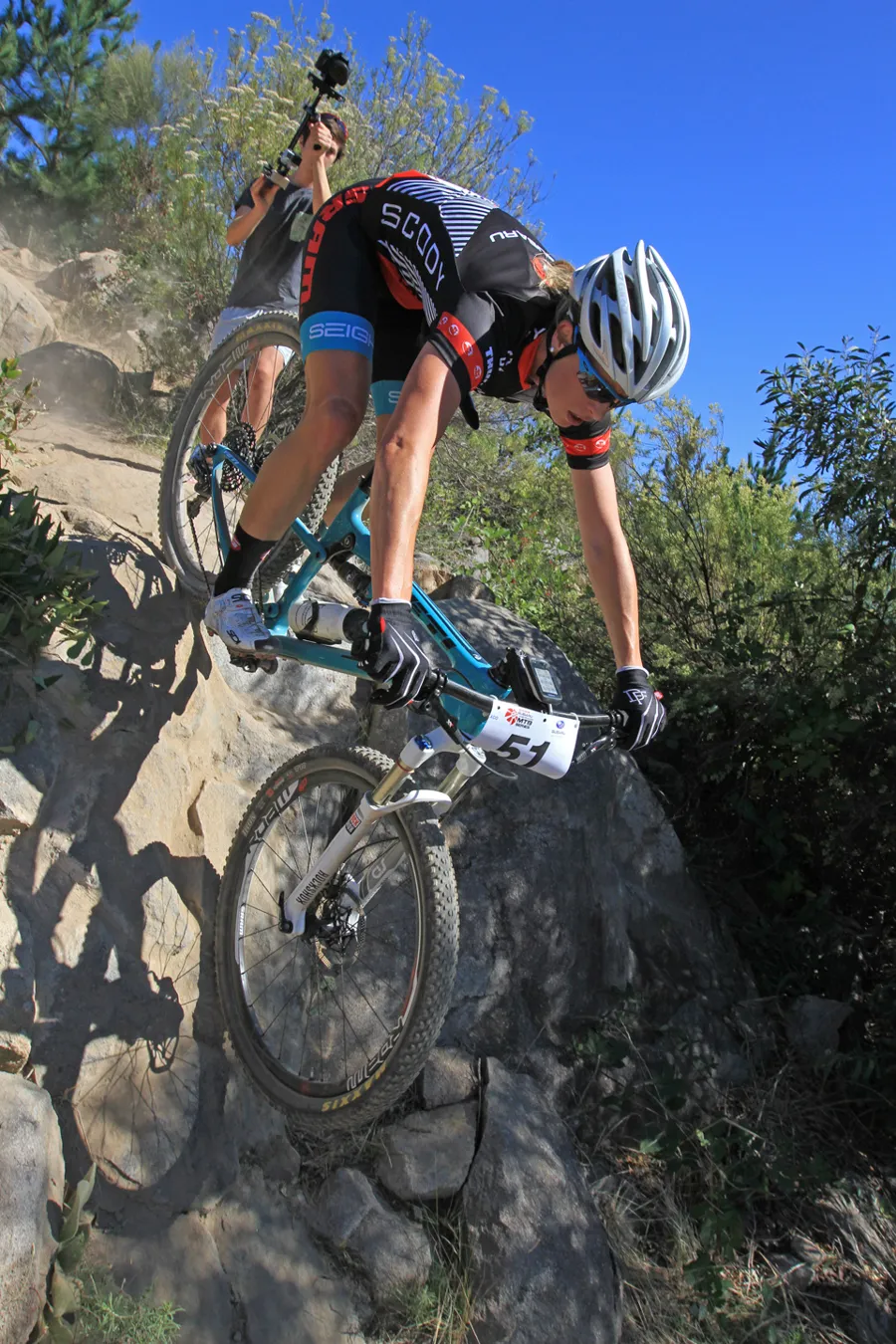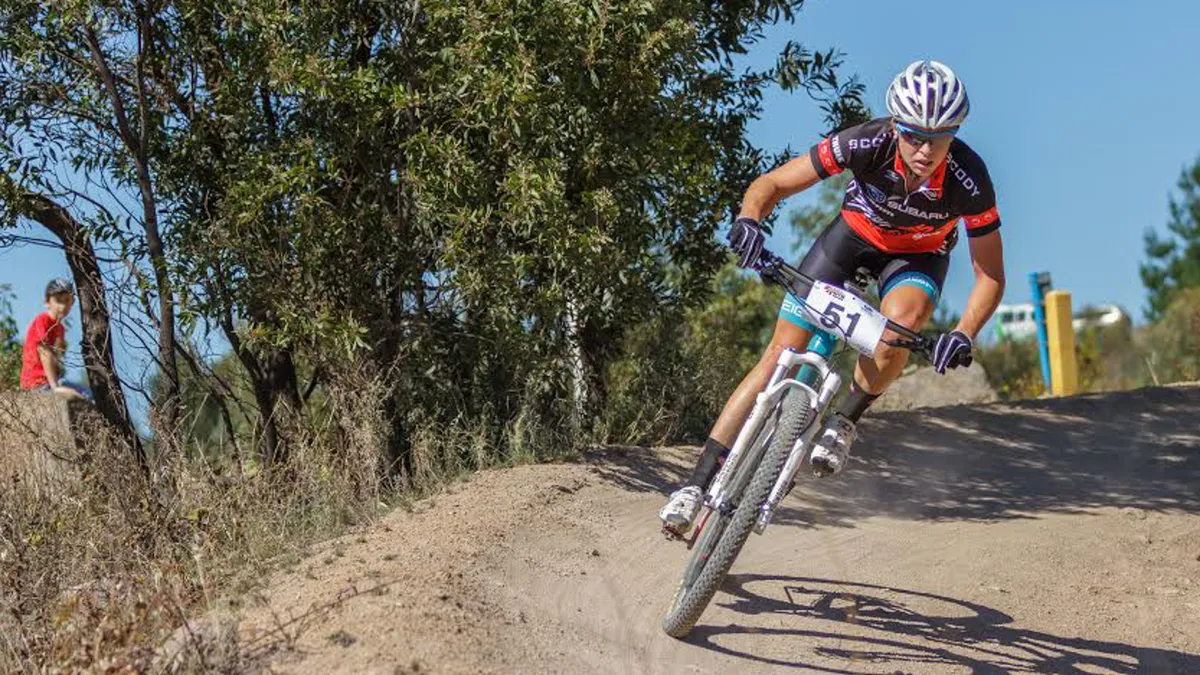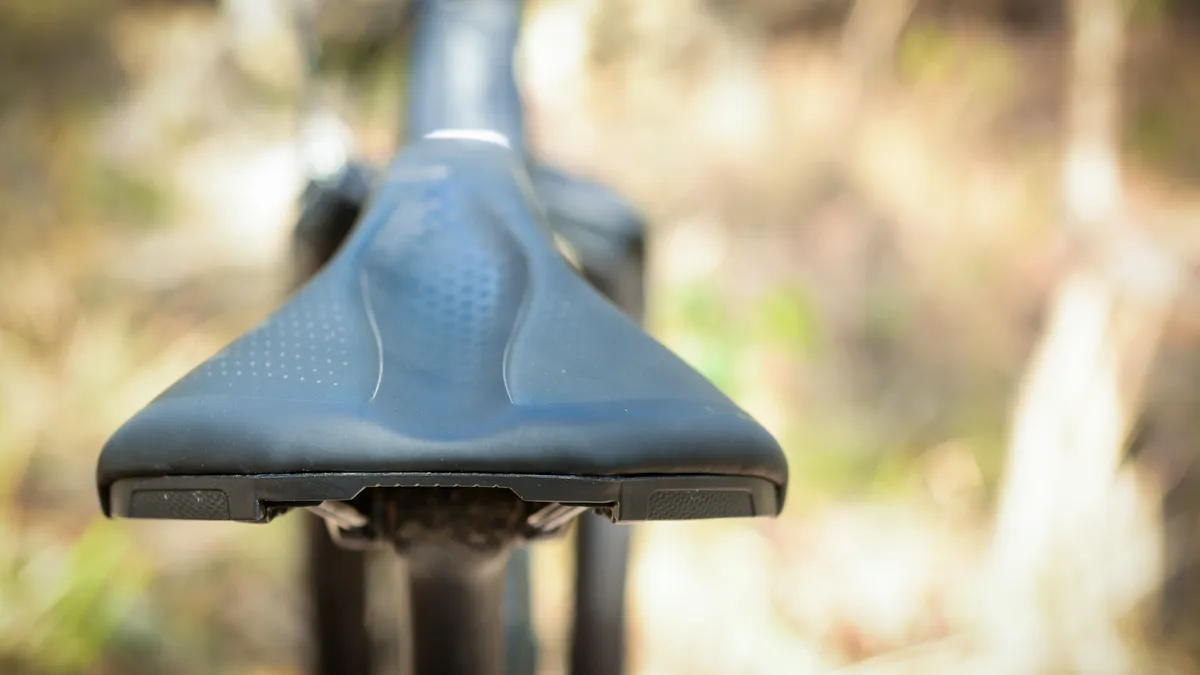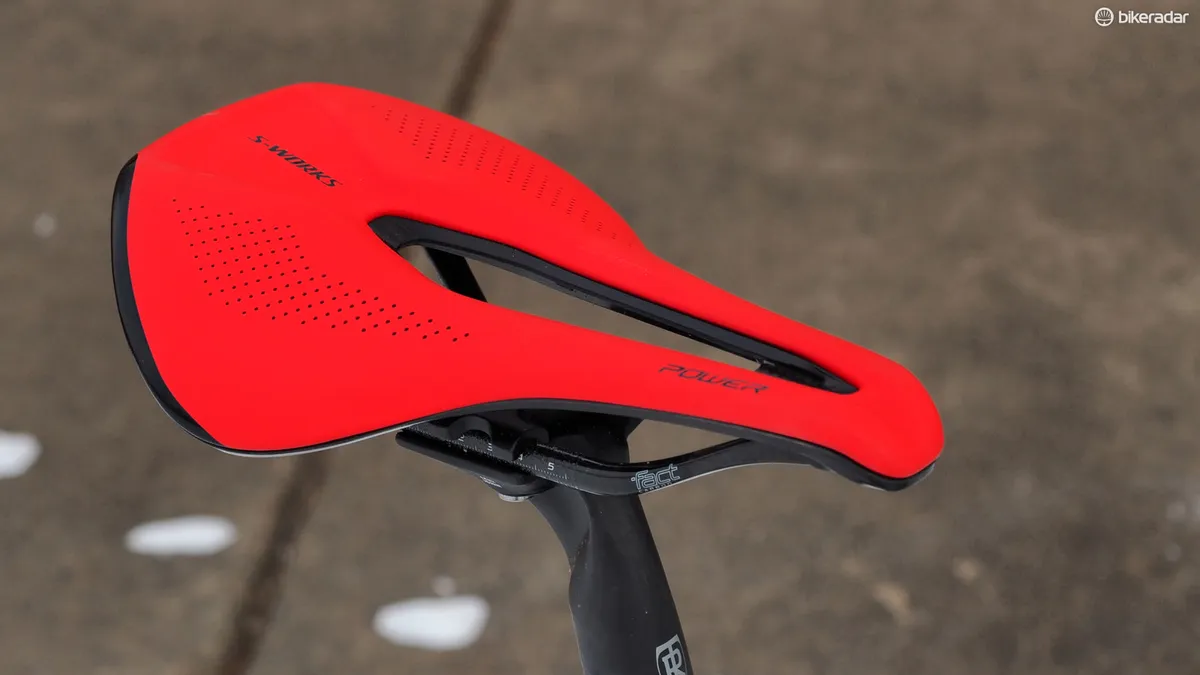When talking about cycling products designed for women, there are typically three big sticking points. The first is that not all women are the same, so why design a product that assumes they are? The second is that because of consumer demand – and the sheer cost of designing and producing these products – there's often a distinct lack of availability at the high end of the performance spectrum.
Third, while some companies have forged into exciting new territory with their designs for different body shapes and riding styles, there are a lot of companies, and people, who are yet to get on board. Companies that claim women’s specificity, without any real research or design characteristics that genuinely improve women’s riding experiences, can do more harm than good.
These sticking points have made ‘women’s-specific’ one of cycling’s more confusing – and sometimes infuriatingly misleading – buzz phrases. For a tag that's trying to capture something specific, it can be remarkably vague.
Still, over the last 20 years, we have moved from a few options for women’s clothing and saddles to an increasingly refined range of equipment, clothing and accessories. And the more we learn, the better placed we are to understand the reasons some unisex products are better suited to women’s riding demands than others.
So how did we get this far? And where to from here? We talked to staff from Liv, Specialized, Trek and Yeti, as well as professional cyclists Tiffany Cromwell and Peta Mullens, and asked for their thoughts on the current wave of research, innovation and designs for women.
Putting the debate in context
While change is slower at the top end, Velocio-SRAM racer and cycling clothing designer, Tiffany Cromwell, sets this in the context of the impact of the women’s shift for riders more generally.
“From a cycling products point of view I think we’re seeing a greater change into the mentality towards women’s-specific products and how they’re being marketed,” she tells BikeRadar.
“Specialized and Giant have probably been the leaders in this, particularly with their concept stores having dedicated women’s-specific areas and [they're] putting women in charge of their marketing and product development.”
In recent years, the women’s-specific debate has moved from products for ‘all women’ to acknowledging our different needs and experiences. This progress can clearly be seen when you consider the diversity of women’s clothing brands and saddle designs.
“Women have many different body types so it’s difficult to have a product that suits everyone,” said Cromwell. “[But] as generally women are much curvier than men, it’s important to make clothing with panels shaped and put in the right places.”
Women’s chamois, clothing, backpacks, shoes and gloves have long since exited the debate about what is and isn’t, should and shouldn’t be, women’s-specific. Nowadays, choice for these types of products, whether they need to accommodate different body features (clothing, packs, shoes and saddles for instance) or simply be available in a smaller and more nuanced size range (such as gloves, sunglasses and handlebars) just feels like common sense.
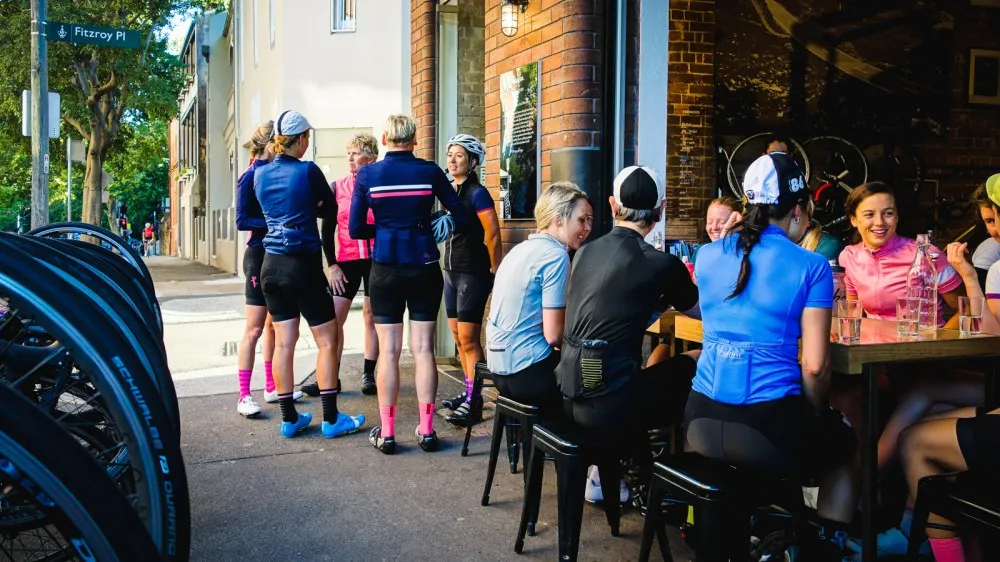
With the likes of Rapha running large group rides, growth in women's cycling is undisputed
Huge growth in the number of women participating in cycling over the last two decades proves that the market for women’s products is here to stay.
This growth allows for more investment into, and development of, more costly products. In recent years, the biggest innovations for women’s products have been in bike design.
Bikes for women: innovation, investment and demand
In 1999, Trek was the first company to offer bikes for women with designs that extended beyond a stepthrough, skirt-friendly frame. By 2004, Giant and Specialized, arguably the other two biggest global bike brands, were also selling bikes developed for women.
“In the beginning ‘Giant for Women’ offered a fair selection of women’s-specific geometry models, which takes a significant investment in custom tooling and mould creation,” says Janette Sherman, the global communications manager for Liv. The women’s cycling brand was created to sit alongside Giant in 2009, and now stands strong in its own right.
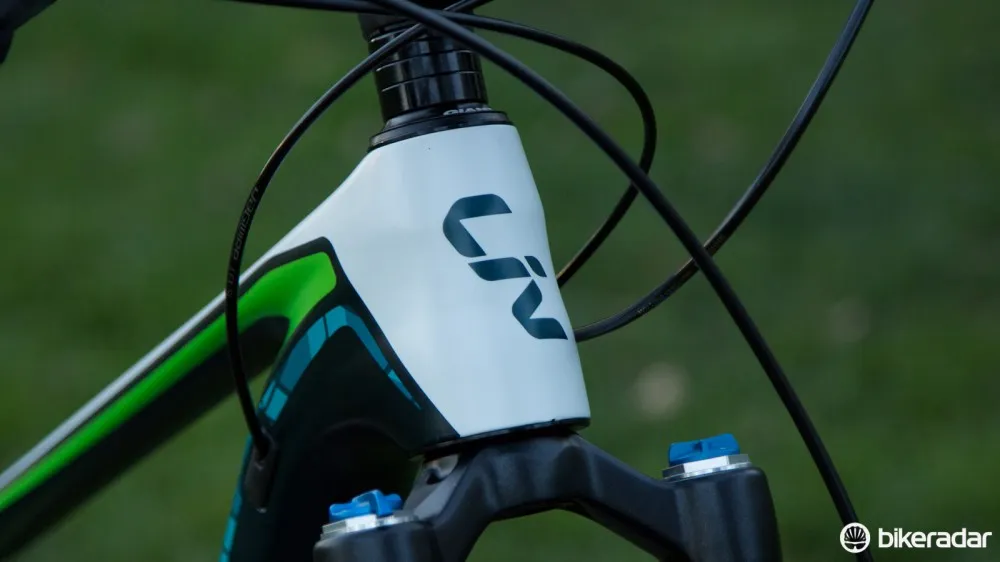
Liv is now a brand in its own right
“As time progressed, this women’s-specific geometry commitment grew and grew, to the point where Liv is today," Sherman adds. "All of our performance and sport models feature separate geometries, independent model names and unique component builds – not to mention colours and graphics.”
The Specialized and Trek product lines have also expanded rapidly over the last decade. “As the market grew, and we all learned more about female consumers in the world of cycling, our product line reflected that understanding,” explains Trek women’s and city bike marketing manager, Emily Bremer. “We went from one women’s-specific model in 1999 to over 50 across categories today… the options available now cover many different riding styles and preferences.”
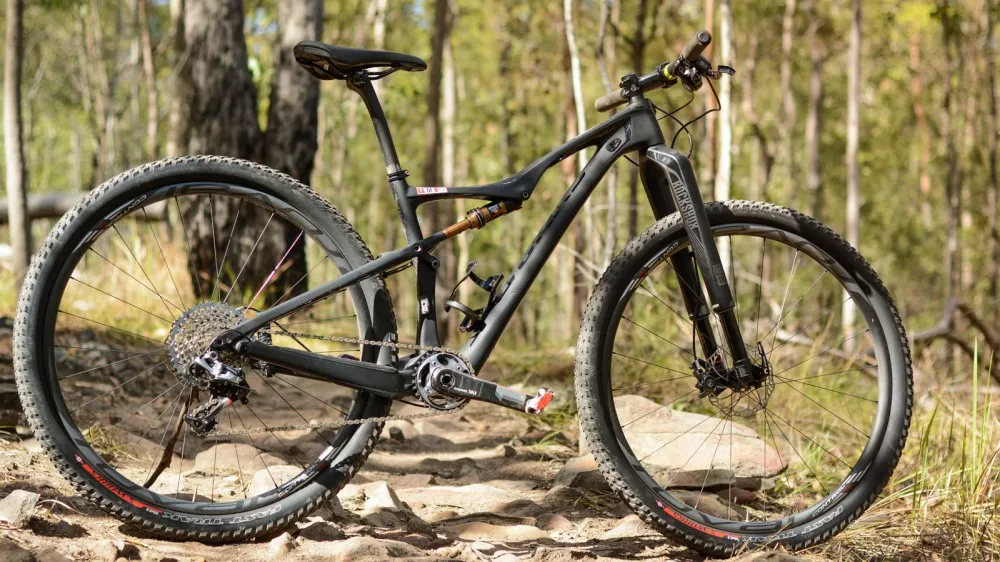
Increased standover height and shorter reach is a key difference in women's bikes
In terms of design, bikes for women usually offer lower standover height and shorter reach than men’s designs, a slightly shorter or taller head tube (depending on desired ride characteristics), and an increased range of sizes at the smaller end of the spectrum. A parts selection catering to key contact points is a given, with bar width, saddle selection, grips, crank length, suspension tunes and gear ratios all taking women’s body shapes and riding styles into account. So where is this information coming from?
Industry driven research and development
In order to understand the needs of different types of riders, companies within the cycling industry have developed rigorous in-house research and testing operations.
“We've been able to gather a tremendous amount of research through our Body Geometry Fit and Retül 3D Fit programs to look at the female anatomy and best reflect this information in our products,” says Katie Gruener, Specialized’s global PR manager.
Body Geometry Fit sessions are a product offered in Specialized bike shops around the world and are a major source for the giant firm's data. But it doesn’t stop there. “We do scientific tests such as pressure mapping, an extensive amount of rider analysis with focus groups, and work closely with our retailers to gain their insights,” said Gruener. Staff take testing, and providing feedback on, prototypes very seriously, and the company works closely with its athletes too.
In terms of women’s bike designs, this has led to a lot more choice and innovation, particularly when it comes to frame designs for women of below-average height – riders who would typically find a small men’s frame uncomfortably big.
“We try to not look at products as men vs women,” Gruener goes on, “but more 'what would this rider want?' – and develop it from there.”
Liv also has a comprehensive research and development strategy. “There are four main components we consider when designing women’s-specific geometry,” says Sherman. “Global Body Dimension Database, intended usage, pro rider feedback and target-consumer feedback.”
The Global Body Dimension Database is largely gathered by Liv and Giant, but also draws from external sources such as research conducted by NASA. “The database provides average body dimensions of women all over the world – things like arm, torso, and leg length, and overall body proportions. This helps us identify trends when comparing the male and female bodies.
“However, all women are different, so this of course isn’t the only driving factor," says Sherman. "What tends to be true, however, is that most women carry their body weight lower, and our strength comes from our lower body. This impacts geometry because our entire goal is to properly balance women over the bottom bracket for optimum control.”
There is no magic combination that suits all women. But another significant impact of these designs, and the need to sell them, is that we can now enter a shop, and find a bike designed for people like us. We can test ride it without having to imagine how it might feel with a heavily modified setup.
The visibility for women’s riding provided through marketing and social media is important too. Women’s riding is becoming normalised; it's no longer at the fringes of our sport only for those who know where, and how, to look.
Popular with women, built for the masses
While research and development is one thing, another big factor in designing products for female riders is cost. So how do smaller companies respond to the challenges of catering to, and understanding, the women’s market?
Yeti, Cervélo and Pinarello are examples of brands that are popular with women, despite sticking to a unisex approach to design. These brands have a boutique and high performance appeal. This means a lot of riders build up a frame with their own parts selection, taking care of key contact points suited to their own physique. What we now know about fit for women, though, reveals that these brands offer features that genuinely favour female riders, such as a low standover and a size range that caters to ladies of below-average height.
We ask Chris Conroy, president and co-owner of Yeti Cycles, if he can explain a bit about the reasoning for sticking with a unisex approach.
“We’ve discussed this a lot internally and with our long-time female riders," he says. "While we haven’t made gender-specific bikes, you could argue many of our bikes are made with women in mind. For example, our ARC and ASRc have 29in wheels for medium to extra-large sizes, and 27.5in wheels on the small and extra-small to accommodate smaller riders better. We also make bikes like the SB5c and SB6c in an extra-small. Maybe not a great financial decision, but we feel it’s important to accommodate smaller riders.”
Again, cost is an important factor, but Conroy’s respect for female riders comes through strongly here too. “It’s absolutely critical to have women integral in the design process and the marketing,” he adds.
Yeti takes its women’s audience seriously, and it shows. The company also has a long history of supporting women from the professional to grassroots levels with pro rider sponsorship, the women’s only Beti Bike Bash race and skills clinics. “These long term commitments seem to resonate with women – and we make bikes they want to ride,” Conroy says.
What do pro riders say?
We’ve come a long way in regards to the recreational women’s market, and we understand a lot more about what does and doesn’t work for a diverse number of body shapes and riding goals. But what about the pointy end of the sport, where the amount of choice for women is still catching up with options for the men?
We turned to Wiggle Honda road racer, and SRAM-Yeti Racing mountain biker, Peta Mullens, and were surprised to learn she tends to use men’s or unisex products almost exclusively: “For me, the only women’s-specific product I use is the chamois in my Seight knicks... because women’s-specific is a smaller market, the products may not be as lightweight or provide the same colour ranges.”
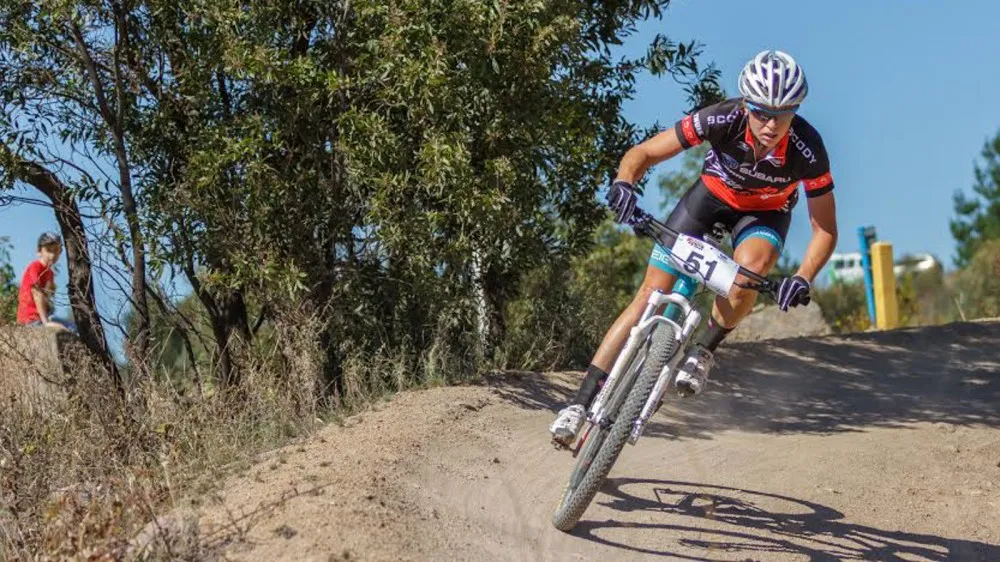
Peta Mullens hardly uses any women's-specific products (photo credit - Jaime Black)
The most important things for Mullens when considering new equipment? “Reliability, weight, appearance… in that order,” she says, revealing her race-minded focus. Mullens is above average height for a woman, which gives her more options within unisex product lines. She quickly points out the impact of the growing women’s riding movement in other areas, demonstrating the ties between expanding product lines and growing the sport as a whole.
“I think the differences at the recreational level translate to increased sales, then to increased participation in racing, increased interest in watching elite-level racing – and that will eventually lead to more sponsors, minimum wage and so on. It’s a butterfly effect,” Mullens continues.
We turned back to Velocio-SRAM rider, Tiffany Cromwell for further insights from the pro field. Cromwell points out that at the top level, companies might have one women’s bike that's a more of an all-rounder, whereas the options with a unisex bike cover the performance demands for different types of racing.
“You will have Classics bikes, mountains/climbing lightweight bikes, aero frames, etcetera,” Cromwell says. While the likes of Liv and Specialized are now further diversifying in this direction, for the moment Cromwell prefers the variety provided by unisex designs – provided she can adapt them to fit.
“Generally the main things I would need to adapt are the saddle to women’s-specific, and narrower handlebars, as women will generally ride narrower bars than men due to our smaller shoulder width. Then it’s just important that a high-performing men’s or unisex product make frames that are small enough, which most do these days, as that is the biggest factor when talking frame size.
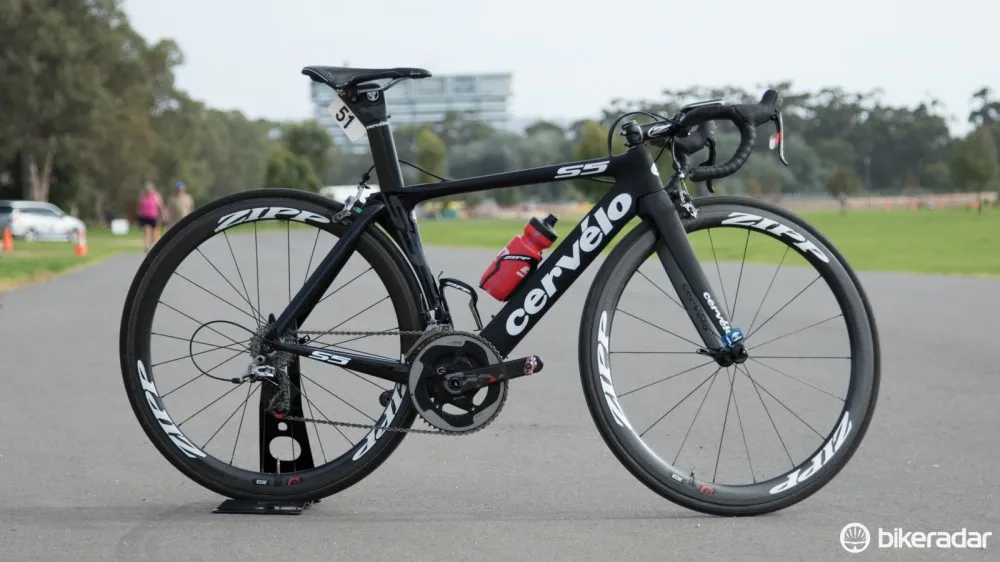
Tiffany Cromwell is able to use a stock standard Cervelo S5 – frame size availability is crucial
“Being a smaller rider I need a shorter top tube so I can have a nice ratio stem length to keep my handling abilities. This just comes down to making sure I’m sized correctly and with a bike brand that produces a 49-50cm frame size.” Cromwell’s response once again demonstrates the importance of knowing what does and doesn’t fit, and how that sits alongside personal riding goals, in order to make successful product choices from the outset.
Where to from here?
Over the last 16 years, we’ve moved from a first foray into bike designs for women to a rapidly growing selection of equipment and accessories that are as diverse as the people who use them.
‘Women’s-specific’ no longer points to a tentative attempt at growing a recreational user base. The companies forging new ground in this area have moved right past designs that cater to ‘all women’ and are acknowledging the need for different rider types within this segment.
Personally, I hope that we stop seeing women’s products as something diverging from men’s or unisex products and consider these research and development processes are part of the growth of the industry, and the sport, as a whole.

The Specialized Power saddle is a totally new unisex model
This is beginning to happen, as evidenced by Specialized’s new Power saddle, a product that drew on data gained while developing the women’s Myth saddle. A channel toward the front relieves pressure when the rider is bent over in an aggressive riding position. The same research and development processes behind saddles specific to men and women have shown that the Power saddle is suited to both genders when riding in this position.
As we learn more about what makes different products fit the range of women’s bodies better, bike shop and industry staff are more aware of what fits other bodies of different shapes and sizes too. What we now understand about making the sport enjoyable for a growing diversity of rider types is gaining the traction and momentum it deserves.
“It wasn’t long ago that women’s-specific equipment was brand new to the market, and that it was almost received with a bit of scepticism,” says Sherman.
“Now that companies seem to be doing their research, instead of just the typical ‘shrink it and pink it,’ women have come to expect women’s-specific design. That being said, companies are now forced to put in additional time and research into their women’s products.
“This is a new mindset – [one that] will, hopefully, stimulate more innovation in the cycling industry as a whole,” Sherman concludes. From products that are necessarily specific to women, to better-informed options for riders across the board, the approach is already bringing welcome change within the sport. Long may that process continue.

